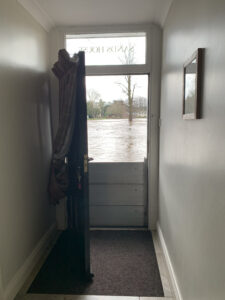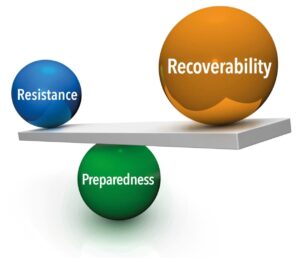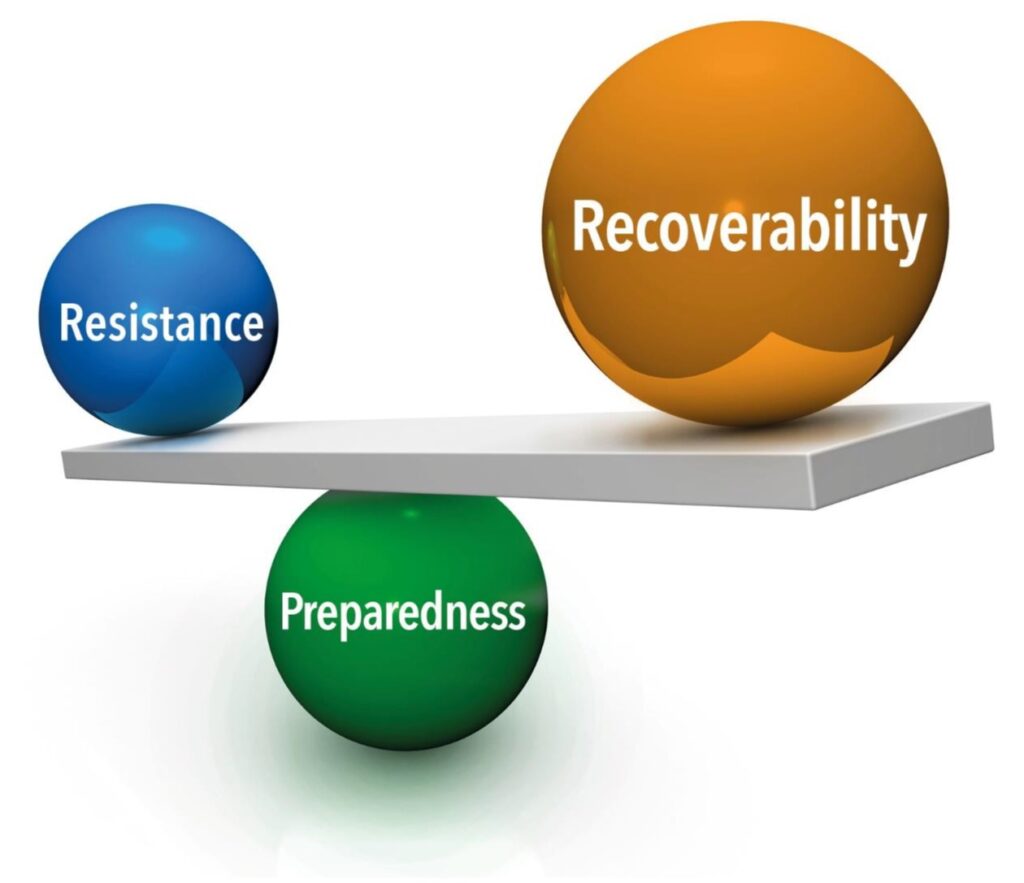Alan Ryan, RAIN Programme Manager. West Northants Council (LinkedIn)
Flood risk management goes far beyond simply keeping water out of our homes. It’s about adopting a comprehensive, holistic approach – one that combines preparedness at both the property and community levels, resistance measures to mitigate floodwater entry, and recoverability strategies to reduce disruption when floods occur. Together, these elements build truly flood-resilient communities.
At the RAIN Project, as well as with our work with BeFloodReady, our mission is to empower communities by helping them understand, prepare for, and recover from floods. Through our various workstreams, we address surface water flood risks from multiple angles: natural flood management (NFM) to reduce risks across catchments, community engagement through education and awareness campaigns, and property-level flood resilience (PFR) measures. These interconnected strategies overlap and complement each other, creating mutual benefits that enhance overall flood resilience.
The role of Property Flood Resilience
When people think about PFR, resistance measures like flood doors, barriers, puddle pumps, and self-closing airbricks often come to mind. While these measures are vital, they’re only one piece of the puzzle. While it’s only natural for people to focus on keeping the water out, resistance alone isn’t enough. Without proper preparedness, such as creating a flood plan or timely flood alerts, you may not have enough time to correctly deploy your resistance measures. Even with robust resistance, water can still find its way in through unexpected routes, over-topping, or allowed leakage.
The National Flood School at HR Wallingford provides training to loss adjusters and people working is disaster care and recovery and they talk a lot about how water will also get through walls, come up through the ground or find an entry point between the joint of the walls and floor.
This is where recoverability becomes essential. Recoverability ensures that even if water breaches any measures you have in place, the property can recover quickly, reducing long-term disruption and financial impact.

Resistance: the starting point
Resistance measures focus on keeping water out of properties. But for these measures to succeed, they must be:
- Properly prepared: Stored, maintained, and ready for deployment.
- Properly installed: Fitted by trained professionals to ensure effectiveness.
- Properly used: Fitted or used correctly during flood events.
- Properly maintained: Regularly checked to ensure everything is working as it should.
It’s vitally important to recognise that resistance measures are not a “fit-and-forget” solution. Even passive measures require attention and maintenance to remain effective.
Preparedness: the forgotten piece of the puzzle
Preparedness isn’t just about education or creating a household emergency plan. It extends to how we integrate and maintain PFR measures as part of everyday life. This includes:
- Knowing how and when to deploy flood products.
- Practicing deployment in advance.
- Regularly checking and maintaining equipment.
The good news? Many preparedness steps cost little to nothing and involve simple behavioural changes. These actions, when part of a well-thought-out flood plan, can significantly reduce the damage caused by flooding.
Recoverability: building back better
Whereby resistance is more about what’s already been put in place and preparedness focuses on what you can do in the present, recoverability sits more in the future and what you can do to make your property more resilient to flooding going forwards, to enable properties to recover quickly and effectively after a flood.
This doesn’t just involve repairing damage but making smart, resilient choices for the future. Key strategies can include:
- Adapting during routine upgrades: Opt for flood-resilient materials, like raised kitchen units, stainless steel or plastic units, and waterproof ceramic flooring, when making changes to your property.
- Building back better after a flood: Replace damaged features with resilient alternatives, such as plastic skirting boards, lime plaster walls, or raised electrical sockets.
- Proactively installing measures: Raise appliances, boilers and fuse boards, relocate white goods, and install water-resistant fixtures to minimise damage.
- Designing for resilience in new builds: Incorporate features like self-closing airbricks, raised electrics, and flood-resistant materials into the construction of new homes.
Recoverability isn’t just about technical solutions. Flooding has a profound emotional impact: loss of irreplaceable sentimental items, displacement from homes – your sanctuary, and ongoing anxiety when additional storms are forecast. Initiatives like Flood RE’s Build Back Better helps make the appropriate adaptations by offering financial support for resilient rebuilding; helping families recover more quickly and with less disruption.
The future of flood resilience
While retrofitting existing properties is essential, the most cost-effective time to implement resilience is during construction. Designing homes with recoverability in mind ensures they are better equipped to withstand future floods, especially as surface water flooding becomes more frequent.
Simple measures, such as using resilient materials and raising appliances during the build phase, cost little to no more than traditional methods. Yet, they provide long-term protection and peace of mind.

A balancing act
Ultimately, building flood resilience requires a balance between resistance, preparedness, and recoverability. These elements are interdependent, and only by addressing all three can we create truly flood-resilient communities.
Thank you for taking the time to explore this vital topic. Together, we can help communities not just survive but thrive in the face of flooding challenges. This blog was following a presentation delivered by Alan at a BeFloodReady event in 2024 (see the video for the webinar here)



